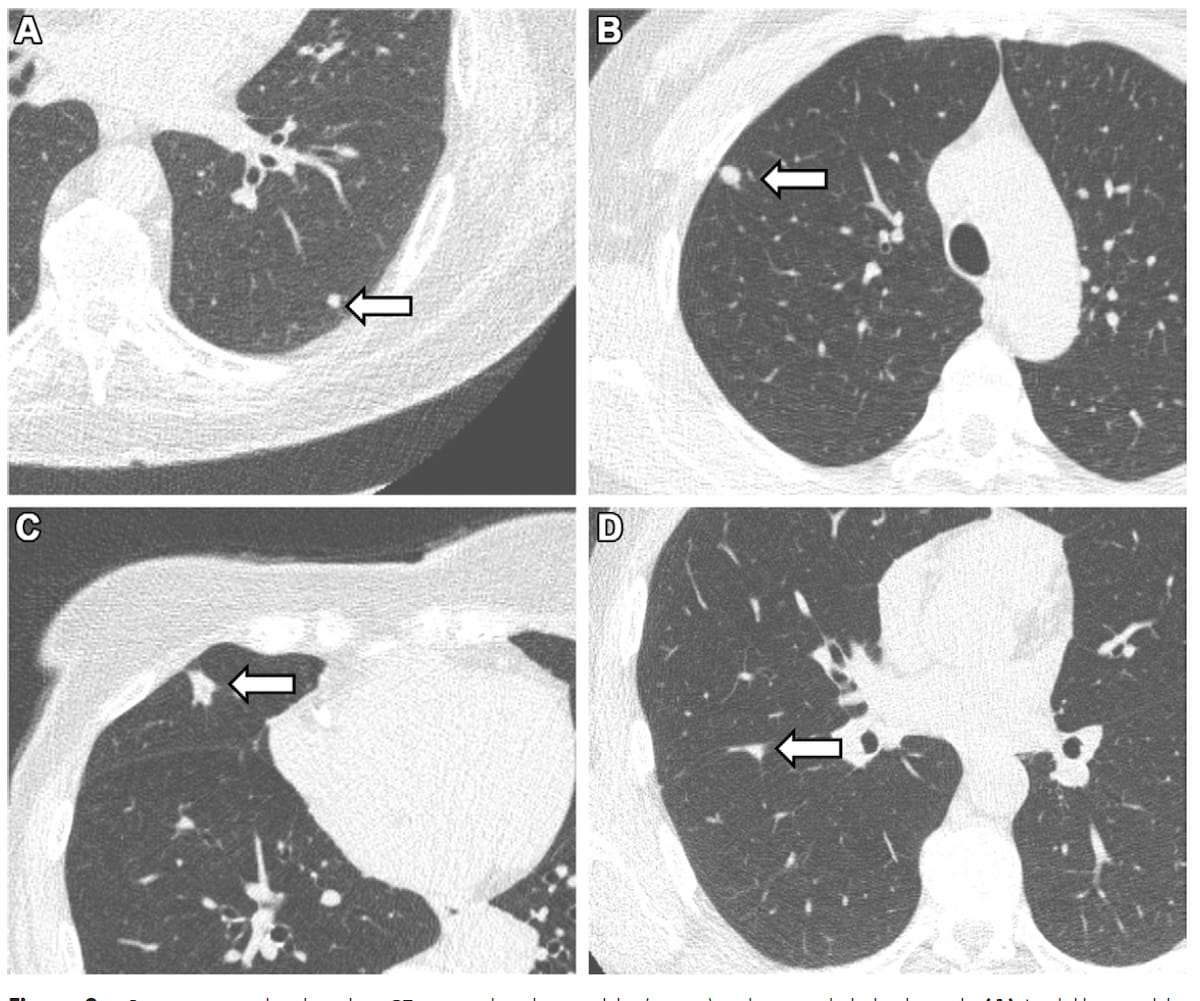Over 40 percent of non-smokers have at least one lung nodule and nearly a quarter of this population has clinically relevant nodules based on low-dose chest computed tomography (CT) scans from 10,431 non-smokers in the northern Netherlands.
For the study, recently published in Radiology, researchers reviewed findings from low-dose chest CT scans for 4,812 never smokers and 5,619 former smokers with 7.9 median pack-years and 27.4 median quitting years. The median age of the study cohort was 60.4 and women comprised 56.6 percent of the overall cohort, according to the study.1
The study authors diagnosed at least one lung nodule in 42 percent of the overall cohort (4,377) with this finding being nearly 10 percent more common in men than women (47.5 percent vs. 37.7 percent). The researchers also noted that 11.1 percent of study participants had clinically relevant lung nodules, a finding comparable to a 10.7 percent incidence of nodules > 100 mm3 reported for high-risk smokers in a 2014 randomized trial.1,2
“Contrary to our anticipation of a lower lung nodule prevalence in our population compared with the previous lung cancer screening studies, our findings showed that clinically relevant nodules are not uncommon in the nonsmoking population and are at least slightly more common than we routinely recognize,” wrote the lead study author Jiali Cai, M.D., who is affiliated with the Department of Epidemiology at the University of Groningen and the University Medical Center Groningen in Groningen, the Netherlands, and colleagues.
The researchers also noted that lung nodule prevalence significantly increased with age, pointing out a 39.4 percent incidence in men from 45 to 49.9 years and a 60.7 percent incidence in men > 80 years of age. Similarly, 27.7 percent of women 45 to 49.9 years of age had lung nodules and the study authors noted a significant increase to 50.9 percent for women > 80 years of age.1
However, the researchers pointed out a comparable prevalence of clinically relevant lung nodules between those 45 to 54.9 years or age and patients between 70 to 74.9 years of age.1
“(This indicates) that a substantial number of suspicious nodules already appear in younger, middle-aged individuals,” added Cai and colleagues.
Three Key Takeaways
1. High prevalence of lung nodules in non-smokers. Over 40 percent of non-smokers in the study had at least one lung nodule, and 11.1 percent of the participants had clinically relevant nodules, which challenges the assumption that non-smokers are at significantly lower risk for such findings.
2. Increased prevalence with age. The prevalence of lung nodules significantly increases with age, with nearly 61 percent of men and 51 percent of women over 80 years old having lung nodules, indicating the need for age-considerate screening approaches.
3. Screening gaps in former smokers. A significant portion of former smokers with lung nodules were not eligible for screening based on current U.S. Preventive Services Task Force (USPSTF) criteria, highlighting a potential gap in identifying individuals at risk for clinically relevant lung nodules.
For those who had at least one lung nodule, the study authors noted that 57.3 percent were former smokers and pointed out a significant screening eligibility disparity in this population.1
“Of former smokers, 93.9% … were outside of U.S. Preventive Services Task Force (USPSTF) eligibility criteria (for screening) and were considered non–high-risk individuals,” noted Cai and colleagues.
(Editor’s note: For related content, see “Study Shows Benefits of AI in Detecting Lung Cancer Risk in Non-Smokers,” “Researchers Cite 81 Percent Survival Rate 20 Years After Initial Lung Cancer Diagnosis with Low-Dose CT” and “What a Ten-Year CT Study Reveals About Emphysema and Continued Smoking.”)
In regard to study limitations, the authors acknowledged that the 98 percent White population of the study cohort, drawn from the northern Netherlands, limited broad extrapolation of the study results. They also noted that single reading of images may have resulted in under-reporting of small and less relevant nodules.
References
1. Cai J, Vonder M, Pelgrim GJ, et al. Distribution of solid lung nodules presence and size by age and sex in a northern European nonsmoking population. Radiology. 2024;312(3):e231436. doi: 10:1148/radiol.231436.
2. Horeweg N, Rosmalen JV, Heuvelmans MA, et al. Lung cancer probability in patients with CT-detected pulmonary nodules: a prespecified analysis of data from the NELSON trial of low-dose CT screening. Lancet Oncol. 2014;15(12):1332-41.
